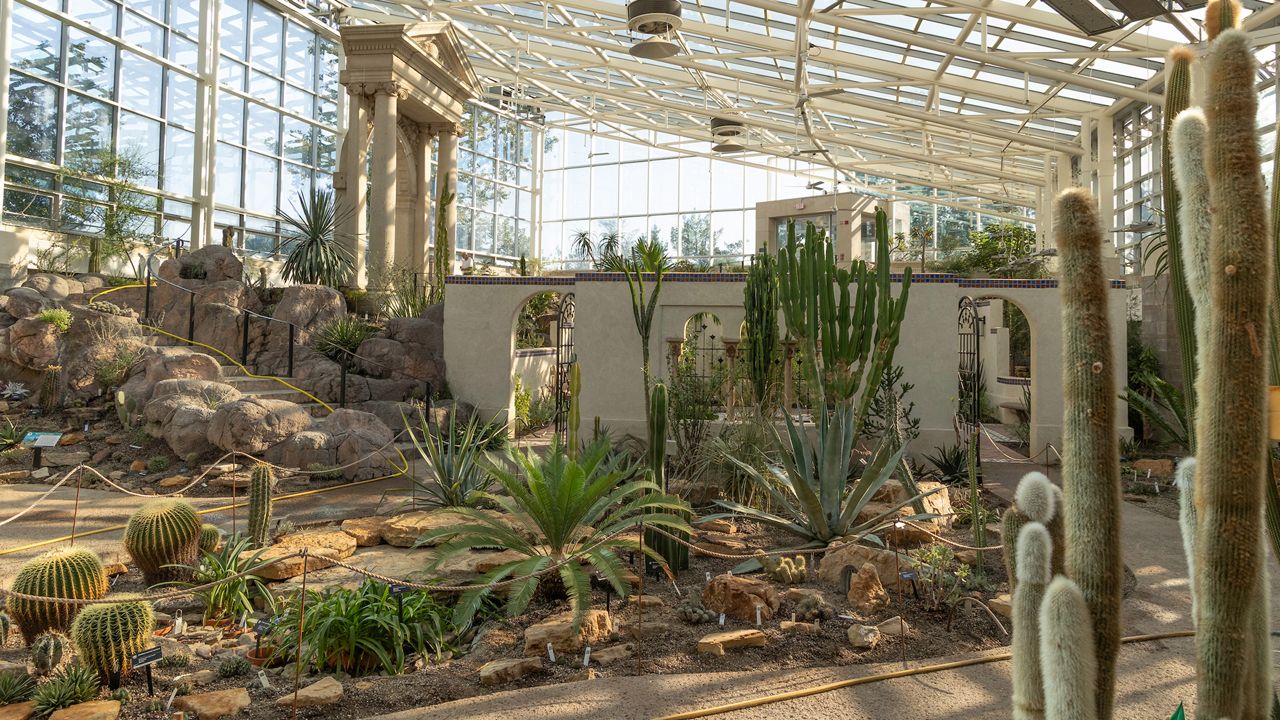ST. LOUIS — For the first time in 30 years, the Missouri Botanical Garden’s extensive cacti collection is now on display in the newly opened Shoenberg Arid House.
The collection features arid plants such as cacti and succulents. The collection dates back to more than 150 years and includes around 1,500 species, according to a press release.
This includes one of the world’s rarest trees, Karomia gigas, that is on display for the first time anywhere in the world. The Garden has been working to save this tree from extinction as there are fewer than 50 left in the wild.
The tree is a member of the mint family and can grow up 80 feet.
“The opening of the Shoenberg Arid House at the Missouri Botanical Garden is an important milestone in the Garden’s history,” said Garden President and Director Dr. Peter Wyse Jackson.
“While the Garden has maintained a rich and important collection of desert and arid land plants from its earliest days, in recent years they have rarely been seen by our visitors. These new displays represent the remarkable diversity and adaptations of these plants, called ‘xerophytes’ from all over the world.”
The Shoenberg Arid House is located just north of the Climatron. The glass conservatory is one of the Garden's most botanically diverse displays concentrated in a small area.
Visitors had previously expressed interest in seeing the collection since the Desert House closed in 1994, but the Garden only could display a few plants at a time without a dedicated space.
“We tried to show as many of the arid plant collection as possible, however, there was a lot of interest from visitors in having a dedicated display of our arid plant collections,” said Andrew Wyatt, senior vice president of Horticulture and Living Collections.
Now, visitors can see many unique species, including those that are threatened, in addition to the architecturally interesting space, according to the press release.










